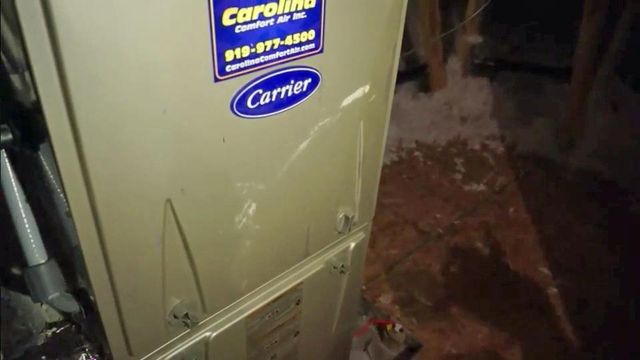Promised code change will improve performance of 'green' heating units
In all, 12 builders installed heaters that could not keep up with North Carolina's cold. Dan Tingen, chairman of the North Carolina Building Code Council, said it is a case of the code not keeping up with new technology, and he promised a change.
Posted — UpdatedIn all, 12 builders installed heaters that could not keep up with North Carolina's cold. The units, some called "green" or "90 percent plus," create more condensation. In winter, that dripping water can freeze, especially when the drain pipe is in an exterior wall. When it freezes, the units shut down, locking up the heaters in the dead of winter.
Furnace manufacturer Carrier and home builder Standard Pacific issued statements Wednesday promising to make things right.
Standard Pacific said:
"We have communicated with the homeowners who have these high efficiency units to advise them of the problem. We are working with the manufacturer and local officials to implement a solution before this winter so that our homeowners do not experience the problem again."
Carrier said it is working with builder M/I Homes "to understand the root cause of this issue, to design and implement a solution to retrofit homes currently impacted, and to prevent condensate freezing in future installations."
Homeowners are desperate for a permanent, reasonable solution. Last winter, they were reduced to stopgap measures to keep their pipes from freezing.
Nancy Bane was instructed to pour a watering can of salty water into her unit each day. Others used blow dryers, beach towels or heat from a lamp to keep the pipes warm.
In one location, builders countered the cold by installing bushes to "insulate" a drain pipe.
Tingen called the temporary fixes "ridiculous" and said he was confident the issue would be resolved before the cold returns.
• Credits
Copyright 2024 by Capitol Broadcasting Company. All rights reserved. This material may not be published, broadcast, rewritten or redistributed.






